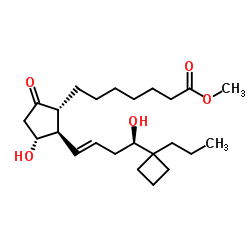Resting but not CpG stimulated keratinocytes suppress autologous T-helper cell proliferation--importance of PGE2 and T regulatory function.
Verena Kopfnagel, Thomas Werfel, Miriam Wittmann
Index: Exp. Dermatol. 20(5) , 394-400, (2011)
Full Text: HTML
Abstract
In the last decade, keratinocytes have increasingly been recognized to actively participate in the skin immune response. However, their influence on infiltrating lymphocytes - abundantly found in e.g. atopic and psoriatic inflammation - is still controversial. In this study, we aimed to investigate the influence of keratinocytes on T-cell proliferation by use of an autologous co-culture model. Because the skin has an important function with regard to detecting invading pathogens, we also investigated the influence of pathogen-associated molecular pattern on keratinocyte - T-cell interaction. We observed a clear inhibition of T-cell proliferation by co-cultured keratinocytes. This effect was found to be mediated by PGE2, as T-cell proliferation was recovered in the presence of the PGE2 inhibitor indometacin. Furthermore, presence of keratinocytes led to enhanced expression of the T regulatory cell-specific transcription factor Foxp3 in the CD4+CD25+ T-cell population which also showed regulatory function. Interestingly, the presence of the TLR9 ligand CpG was able to prevent the inhibition of T-cell proliferation. This was paralleled by a reduced PGE2 production by keratinocytes and a down-regulated T regulatory cell function. Our results indicate that the inhibitory capacity of keratinocytes in the skin is strongly influenced by the surrounding micromillieu.© 2011 John Wiley & Sons A/S.
Related Compounds
| Structure | Name/CAS No. | Molecular Formula | Articles |
|---|---|---|---|
 |
(R)-Butaprost
CAS:69648-38-0 |
C24H40O5 |
|
Role of hypoxia-inducible factor 1, α subunit and cAMP-respo...
2013-07-01 [Am. J. Respir. Cell. Mol. Biol. 49(1) , 105-13, (2013)] |
|
Fibroblast-specific expression of AC6 enhances beta-adrenerg...
2010-06-01 [Am. J. Physiol. Lung Cell. Mol. Physiol. 298 , L819-29, (2010)] |
|
Involvement of the prostaglandin E receptor EP2 in paeoniflo...
2013-02-01 [Anticancer Drugs 24(2) , 140-9, (2013)] |
|
Indomethacin antagonizes EP(2) prostanoid receptor activatio...
2012-04-05 [Eur. J. Pharmacol. 680(1-3) , 16-21, (2012)] |
|
Prostaglandin E2 reduces amyloid beta-induced phagocytosis i...
2010-04-06 [Brain Res. 1323 , 11-7, (2010)] |